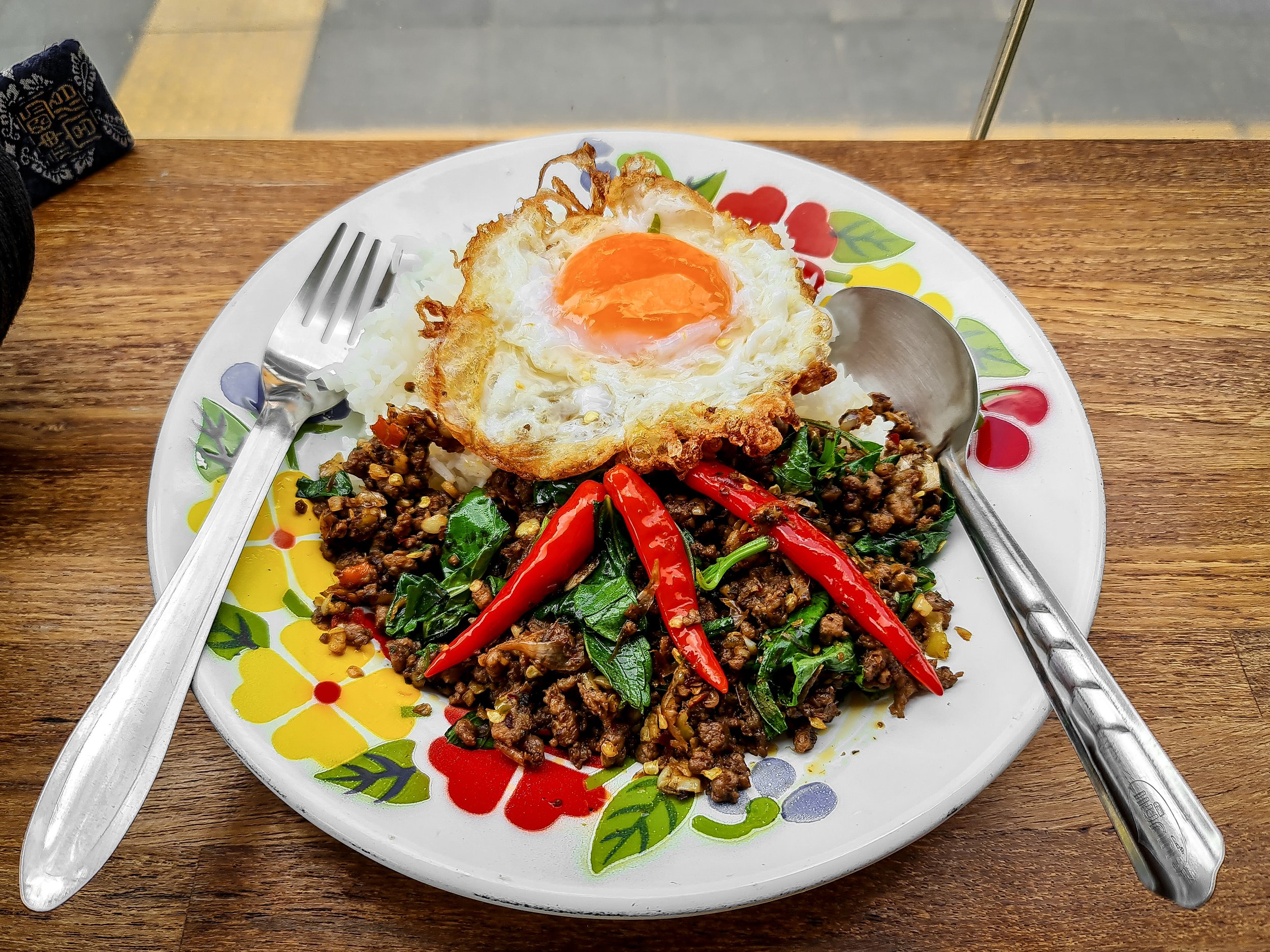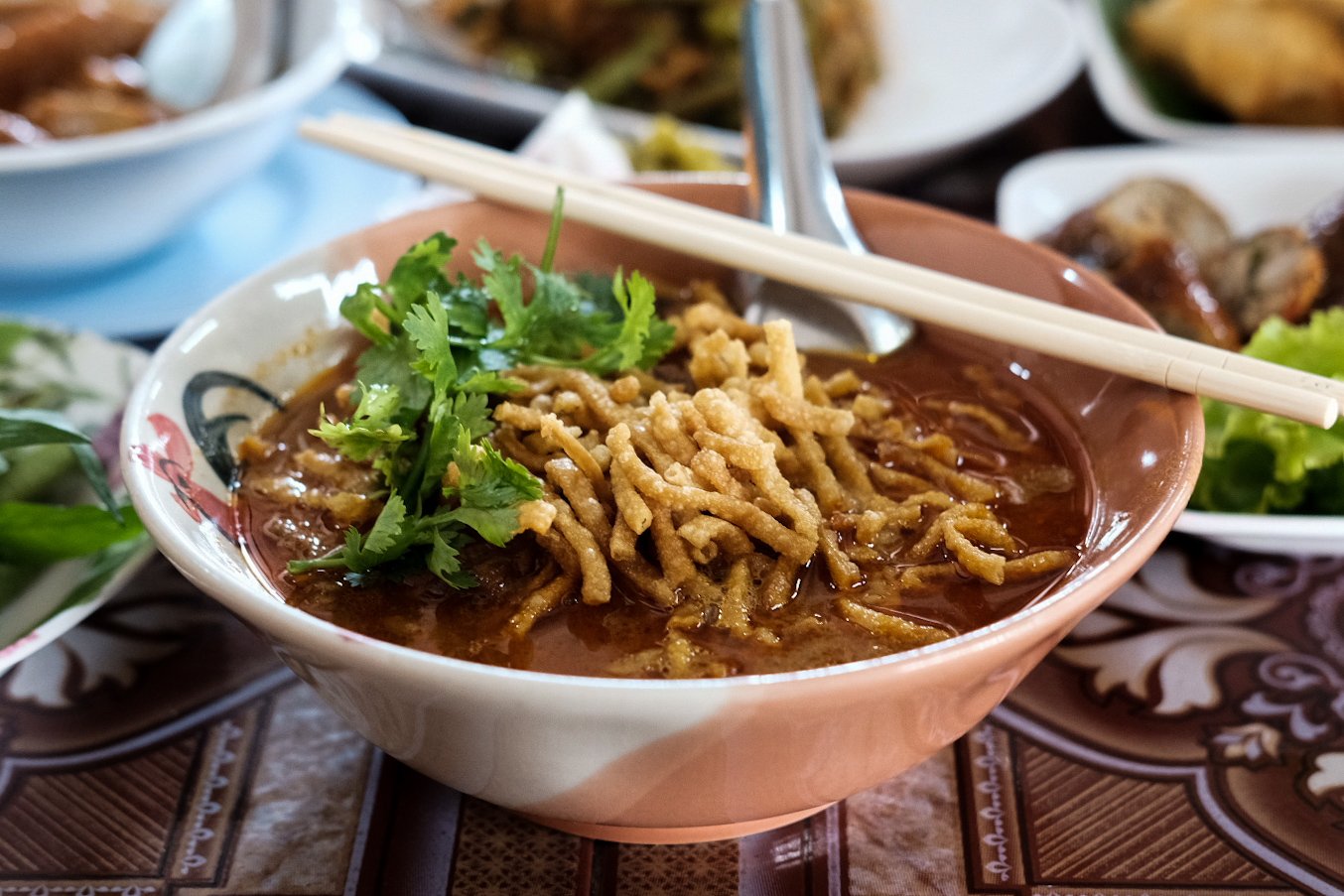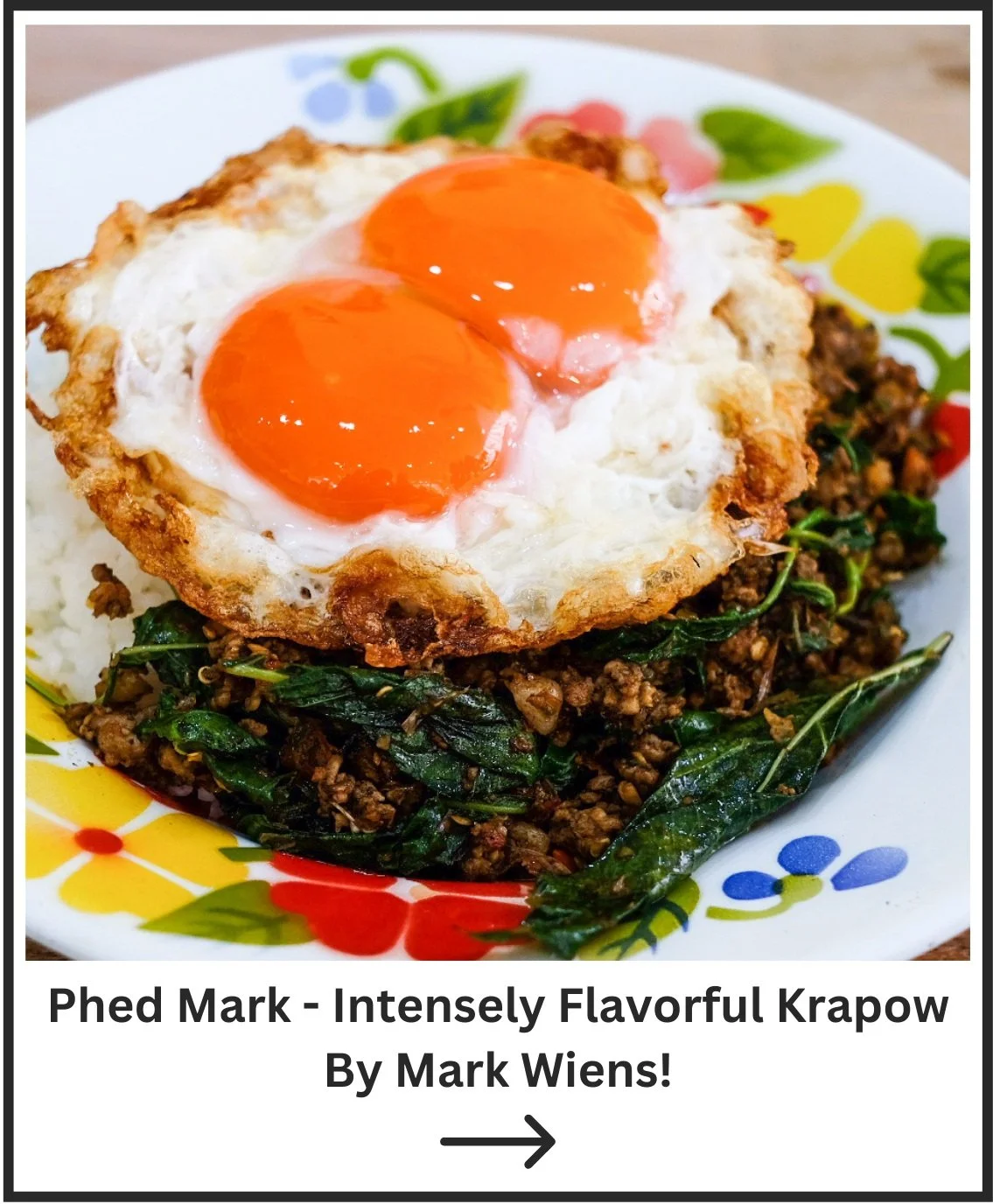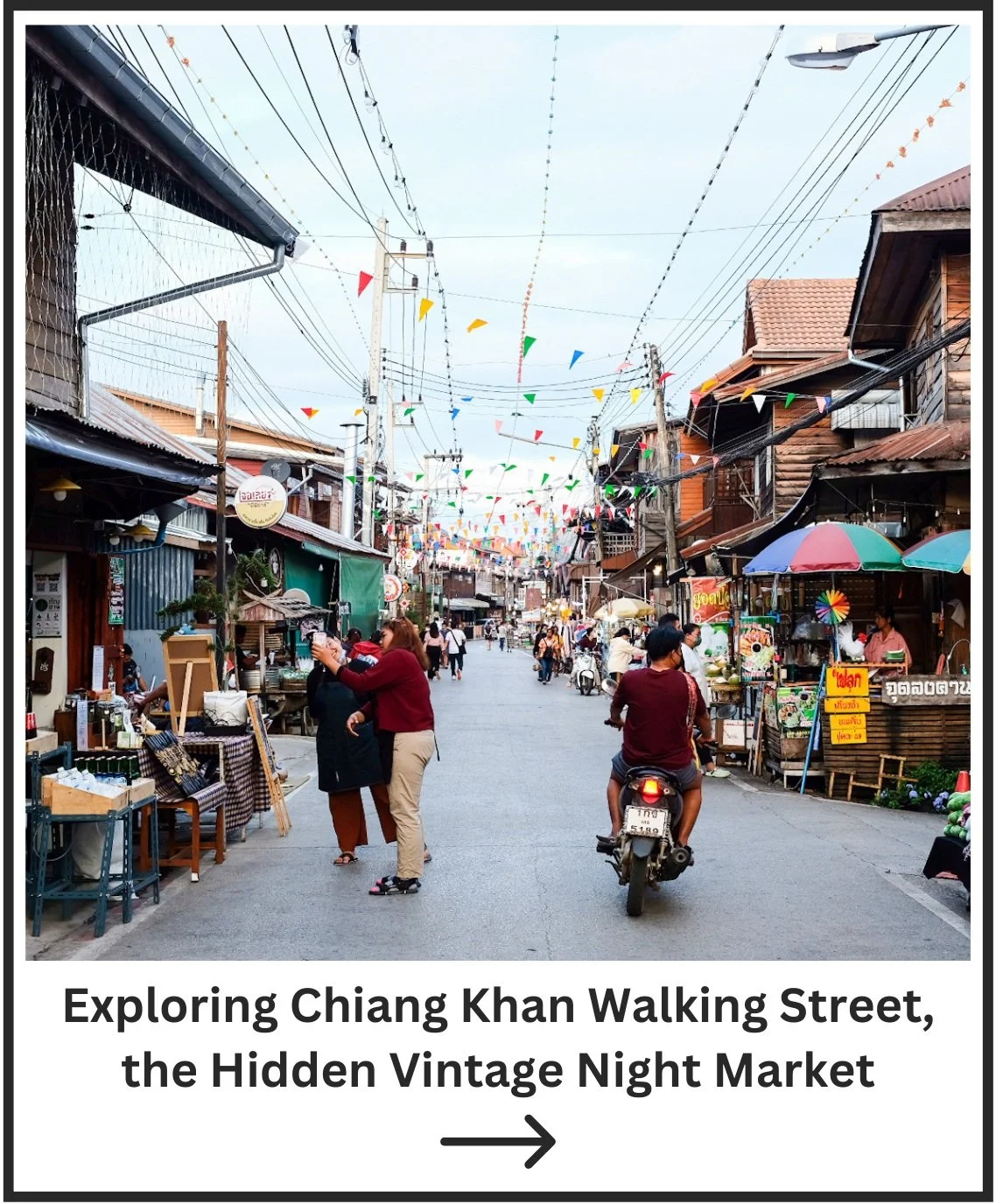The Essential Guide to Thai Food
Thai cuisine is exciting and diverse with many different foods and flavors to try
Introduction to Thai Cuisine
Thai food is one of the world’s most recognized cuisines and it’s gaining popularity in all parts of the world from the United States to Australia. In this essential guide to Thai Food, I will
Thai food is also so diverse and there is so much to learn about it’s history and traditions and as a Thai I can tell you that the usual Pad Thai and Tom Yum Goong isn’t what we Thais would normally eat on a daily basis.
And why would we? There are so many different dishes and types of dishes to choose from that if you just stick to eating the same boring old dishes then you would be missing out on a whole world of Thai food.
From the strong pungent flavors of north eastern Thai cuisine to the Malaysian inspired dishes to the south, Thailand’s food and culture have been inspired by many of her neighboring countries. And even today, Thai food is a unique mish mash of cultural identities.
Fun Fact: The Thai word for “delicious” is: อร่อย (pronounced: a-roi).
Influences of Thai Cuisine
Over centuries, Thailand and her neighbors have culturally influenced each other and of course, with culture comes food. Originally Thai food was influenced by neighboring countries such as Cambodia, Laos, Malaysia. Cooking methods such as stir-frying g have taken inspiration from China.
More recently (not that recent, more like the last 100 years), influences from Japan, France, and Portugal have been ingrained deep into Thai culture. While recently (actually recent this time), You’ll start to see new street food items popping up, which do not have any resemblance to traditional Thai food whatsoever, but they have become part of Thai cuisine.
So Thai food is an ever evolving beast. As new food trends make their way into Thailand and the world becoming closer due to economic globalization, people bring in their recipes and cultures to shape the future of Thai food.
Different regions of Thailand have a unique style of food that have been influenced by neighbouring countries
Regional Variations of Thai Cuisine
Thailand is divided into 4 main regions: Central, North, North Eastern, and South. Each with their own unique take on Thai cuisine. Each of these regional cuisines have unique variations due to the availability of ingredients and cultural influences from neighboring countries and regions.
Central Thailand
This is what you are most familiar with when it comes to Thai food. With Bangkok being the major city in this region, many tourists will find central cuisine the most comfortable to their palettes.
Thailand’s central region is home to a cuisine of balanced flavors, Influenced by surrounding regions and other countries. As the central hub for all of Thailand, an amalgamation of cultural and flavors all thrive here.
Some highlights that originated here are Pad Thai and Green Curry. In addition, you’ll find that jasmine rice is a staple food that is eaten with almost all dishes.
Some notable dishes:
Tom Yum Goong - Spicy and sour shrimp soup
Pad Krapao - Stir fried meat of choice with Thai holy basil
Pad Thai - You all know what this is, the famous noodle stir fry with shrimp, peanuts, and tamarind sauce
Summary: Balanced flavors, Jasmine Rice
Pad Krapao Moo Kai Daow
Stir fried pork with chillies and holy basil, served with a gorgeous fried egg.
This is absolutely my favorite Thai dish.
Read more here: What is Pad Krapow?
Northern - Lanna
Northern (also known as Lanna) Thai cuisine is more mild in flavor compared to the order regions.
With Chiang Mai being the heart of the region many of you may be familiar with dishes like Khao Soi, a delicious curry noodle soup.
Influenced heavily by it’s neighboring countries; Myanmar and Laos, The interesting thing about Northern cuisine is that sugar' isn’t used. Sweetness comes naturally from the ingredients.
Some notable dishes:
Khao Soi - Curry noodle soup
Nam Phrik Ong / Nam Phrik Num - Chili dip eaten with fresh veggies and deep fried pork skin
Khanom Jeen Nam Ngiao - Northern style spicy noodle soup
Summary: Natural and mild flavors
Khao Soi Nuea
A bowl of beef Khao Soi, my favorite Northern Thai dish.
Read more here: What is Khao Soi?
North Eastern - Isaan
In terms of food, the North East (called the Isaan region) of Thailand is characterized by its pungent flavors which comes mainly from the use of a fermented fish gut sauce called “pla-la”.
The heart of Isaan is a city called Nakhon Ratchasima (also known as Korat). Influenced by Laos, other characteristics or North Eastern Thai cuisine are it’s spicyness and general dryness of the dish. A lot of grilled meats are eaten here as well so if you like a lot of meat with your foods then this is the cuisine you’re looking for.
And the staple here is sticky rice that is eaten with every meal.
For me personally my favorite Thai cuisine is food from the Isaan region due to the intensity of its flavors. One Isaan staple you will definitely find everywhere in Thailand is Gai Yang, which means grilled chicken. It might sound pretty boring but trust me, Thai grilled chicken is on another level. Eaten with sticky rice and a sweet and spicy dipping sauce, you can’t go wrong here.
Some notable dishes:
Som Tam Pla La - Papaya salad mixed with fermented fish gut
Larb - Spicy minced meat salad
Gai Yang - Grilled chicken
Summary: Pungent, sticky rice, grilled meat.
Larb Moo
Spicy minced pork salad with a variety of herbs and spices.
Read more here: What is Larb?
South
Southern Thai cuisine is probably the least well known but that doesn’t mean that we should leave it out of our discussion.
The center of this region is Hat Yai, Phuket is also a popular tourist destination that is located in the southern regions of Thailand. Influenced by Malaysia and India, the food you’ll find here is heavy on spices and chillies.
In the south you will also find a large muslim population so a lot of food will be based around seafood. Which also makes sense as the ocean borders all around the southern region.
Some notable dishes:
Bai Liang Pad Kai - Stir fried melinjo leaves with egg
Gaeng Som - Spicy orange soup curry usually with fish
Khua Kling - Very spicy dry yellow curry
Summary: Spicy, Seafood.
Khua Kling Moo
Pork khua kling known to be very spicy but also very fragrant and aromatic.
A very beautiful dish if you want to burn your mouth.
Fundamental Flavors
You have probably heard, Thai food contains 4 essential flavors: sweet, sour, salty, and spicy.
*Note: Some people will say that there is a 5th flavor: either bitter or creamy, but not all dishes exhibit bitterness or creaminess. And the fact that we can’t come to an agreement of what that 5th flavor is means that it is not essential.
Thai food is all about the elegant balance of these 4 flavors.
Sweet
Massaman curry is a slightly spicy curry known for it’s sweetness
Sweetness is generally associated with desserts but in Thailand this flavor is also a key component in many savory dishes.
The main ingredients that add sweetness are: palm sugar, brown sugar, and dark soy sauce.
Some regions, such as the previously mentioned Northern Lanna region, uses natural sweetness from ingredients like vegetables fruits and certain meats like fish.
Some examples are:
Choo Chee Pla - Red coconut curry with fish
Gaeng Kiew Wan - Green curry
Gaeng Massaman - Rich orange curry with influences from Malaysia and India
The cool thing is, sweetness is not just one dimensional either. In some dishes particularly sweets or desserts, the sweetness has layers.
One of my favorite sweets, Khanom Touay, has a rich sweet and salty creamy coconut cream top layer, and the bottom layer is this nice mild sweet panda custard/jelly layer
Sour
Tamarind is one of the many ingredients used to create sour flavors in Thai cuisine
Some Thai dishes use sourness to their advantage. Combined with spicy, this flavor creates a powerful blend of umami.
Citrus ingredients like lime and lemon grass is the main ingredients that are used to give sourness. Another popular fruity ingredient that you might have heard of is Tamarind.
Another one of my favorite dishes is Pla Tod or fried fish, Thai fried fish is topped with a mountain of chopped herbs and garnishes such as shaved papaya, and then drenched with a sweet spicy and sour sauce.
Another notable exmaple are of course the Som Tum, and Tom Yum Goong.
Salty
This Thai omelette from one Michelin star Jay Fai is loaded with crab meat
Fish sauce!
Fish sauce and soy sauce are the key ingredients to create saltiness in Thai foods. And I don’t mean they add extreme saltiness, again it’s all about the balance of flavors.
A comfort food you’ll see often is the Kai Jiew, or Thai omelette. You might not know this but what makes this dish so good is that a dash of fish sauce is mixed into the egg to give it a mild savory saltiness.
I know I just said fish sauce and soy sauce is the key ingredients but normal salt is also used in Thai cooking. Although it is used in just a handful of dished but it is used strategically.
Grilled fish is often coated in a layer of salt to keep the moisture inside when grilling. the result is a nice juicy fish that has a slight hind of saltiness, eat it with Thai seafood sauce and you got yourself a dish worthy of the king.
Spicy
Yum Woon Sen is a light and refreshingly spicy and sour glass noodle salad
Finally we arrived at the most notorious taste, Spicy.
Obviously chillies are used, lots and lots of chillies. However there are also other ingredients that can create a different profile of spiciness such as ginger and peppercorns.
Unlike some chillies out there, Thai chillies are more fragrant and aromatic, Yes they burn your mouth and cause pain but they are also designed to give you flavor as well.
“Thai Spicy” is a term I hear thrown around a lot, but believe me when I say even some Thais cannot handle the Thai Spicy.
Some examples of spicy foods are:
Pad Krapao - Stir fried protein with Thai holy basil
Larb - Spicy minced meat salad
Yum Woon Sen - Spicy glass noodle salad
To be honest, the majority of Thai Foods out there.
Fun Fact: Condiments
One thing you’ll notice, especially if you go to any Thai noodle restaurant, is that the condiments are ones that add to each of these flavor profiles.
Spicy: Dry Chilli
Sweet: Sugar
Sour: Vinegar
Salty: Fish Sauce
Types of Thai Food
Thai food comes in many forms.
On a daily basis Thais often eat a one plate dish known as “Aharn Jarn Diew”. A single plate of food containing staple carbs such as rice or noodles paired with a dish.
When eating with a group of people, much like other Asian cultures, we would order a bunch of dishes and share it with others, with each person having a plate of rice to eat the dishes with.
Looking for must try Thai Foods? Look here: 10 Authentic Thai Foods to Try
Rice - Kub Khao
A typical plate of food includes rice and a main dish, here is khao rad pad krapao gai or rice with chicken krapao
Single plates of food served with a curry, stir fry or any other dish that can pair with rice or sticky rice. The “kub khao” means “with rice”. This is a pretty big category and can basically encompass every dish but some notable examples are:
Khao Rad Pad Krapow - Rice with Pad Krapow
Khao Pad - Thai style fried rice
Khao Rad Gaeng - Rice with curry
Notice the “Khao Rad or Khao” in front of the names of the dish. This basically means “with rice”. All Thai restaurants will say say this on their menu. If you don’t see this indicator it means that you are ordering the dish itself without any rice (which means they’ll also give you a bigger portion too as there is no carb to fill you up).
Noodles - Kuay Tiew
Boat noodles is the most popular noodle soup dish you can find in Thailand
Kuay Tiew or noodles is the most popular street food you’ll find in Thailand and there are many types of noodle dishes in Thailand from noodle soups to dry noodle stir fry
Examples of noodle soups are:
Kuay Tiew Ruea - Boat noodle soup
Kuay Tiew Yen Ta Fo - Fermented bean paste noodle soup (this one is a fun pink color soup)
Kuay Tiew Tom Yum - Tom Yum noodle soup
Example of dry noodles are:
Pad See Ew - Stir fried noodles with soy sauce
Pad Thai - You already know what this one is
Pad Kee Mao - Drunken noodle stir fry
In addition, there are also different types of noodles you can choose:
Sen Yai - Thick wide rice noodles
Sen Lek - Thick rice noodles
Sen Mi - Thin rice noodles (my favorite)
Sen Ba Mi - Egg Noodles
Sen Mama - Instant Noodles
With “Sen” just meaning noodles
My favorite noodle order is: Kuay Tiew Ruea Nuea Sen Mi = beef boat noodles with thin rice noodles
Curry - Gaeng
Panang curry has a fragrant aroma with just a hint of spice. Not too spicy for those who are cautious
Thai currys are made with a blended paste of herbs and spices with some curries being thick from coconut milk while some are more soupy and watery.
Some examples of creamy curries are :
Gaeng Panang - Red panang curry
Gaeng Massaman - Orange curry with influences from Malaysia and India
Gaeng Kiew Wan - Green curry
Some examples of soupy curries are:
Gaeng Som - Sour orange curry
Gaeng Pa - Jungle curry popular in the Northern regions of Thailand
Some examples of popular curry pastes that are used are:
Red Curry - Chilli powder and red curry paste
Yellow Curry - Tumeric and dry curry paste
Green Curry - Kaffir Lime Leaves and green curry paste
I know curry paste is not a descriptive term but each shop has their own special blend of spices that they use to create the paste, so.. You wouldn’t really know what’s in it.
Salad - Yum/Tum and Larb
Namtok is a variation of larb. Here sliced grilled meat is used instead of minced meat
Thai salads come in 2 forms, Yum (or Tum) and Larb
Yum means mix and Tum means pound but they both mean almost the same thing. These dishes are usually sour and spicy from lime juice and chillies.
Examples of Yum/Tum are:
Som Tum - Papaya salad
Yum Woon Sen - Glass noodle salad
Yum mama - Instant noodle salad
Larb is more difficult to categorize as they are in their own league. Larb is not a category, it is a dish but there are various types of larb out there that it might as well be a category of Thai food.
Snacks - Tan Len
Tod Mun is fried fish fritters and are a common street food snack in Thailand
These are little bits of food that you would normally eat on the go or as a side dish/appetizer.
Some examples of snacks you can find are:
Sai Krok Isaan - Isaan style fermented sausage
Beek Gai Tod - Basically just fried chicken wings served with a sweet and spicy dipping sauce
Pak Phet - Fried duck beak, this one is a great snack to have while drinking beer
Tod Mun Koong - Deep fried shrimp fritters
Some of these foods can also be found as street food. There are a wide array of little Thai snacks to try so if you’re feeling hungry while traveling around Thailand, stop by a stall and have a quick bite!
Desserts - Khanom
Khanom krok is a coconut based pudding with a crunchy outer shell and warm creamy coconut milk in the center
Ah yes, Thai desserts. Thai people sure do love their sweets.
Thai desserts come in varying levels of sweetness. From mild sweetness to extreme, so much so that you might think it is artificially sweet. but don’t worry Thai desserts are all made with natural ingredients.
There are so many types of Thai desserts that it becomes very difficult to categorize them all.
Here I give you some types of Thai desserts; Custard, Rice, Soup, Pancake.
Custard - creamy and coconut based, eg. Khanom Krok, Khanom Tuay, Khanom
Rice - Desserts using… rice. eg. Mango Sticky Rice, Khao Tom Mud, Khao Lam, Khanom Tom
Soup - usually coconut milk based. eg. Bua Loy, Lachong, Tub Tim Krob
Pancake - Pancake-like things. eg. Roti, Khaom Buang
There are of course, many many many more types of desserts. So much that I could write another article only about Thai desserts.


































